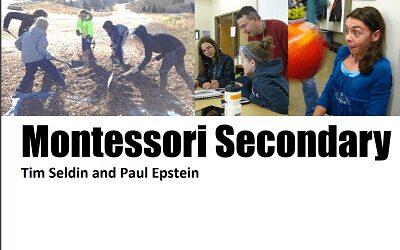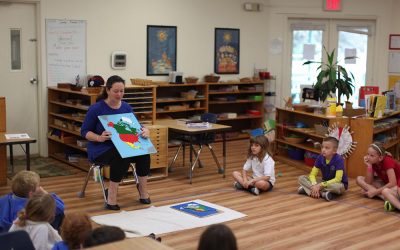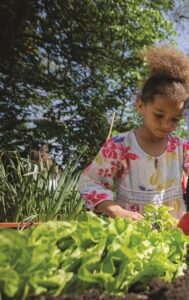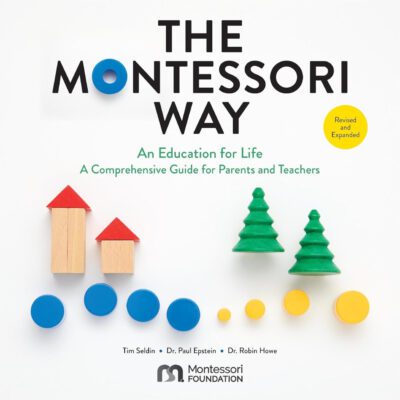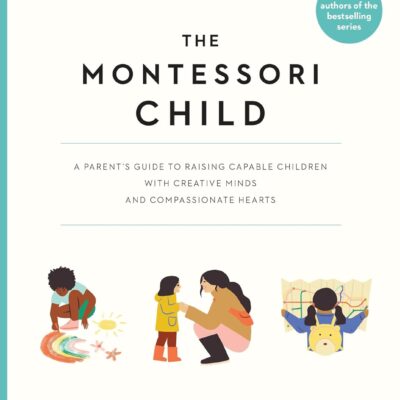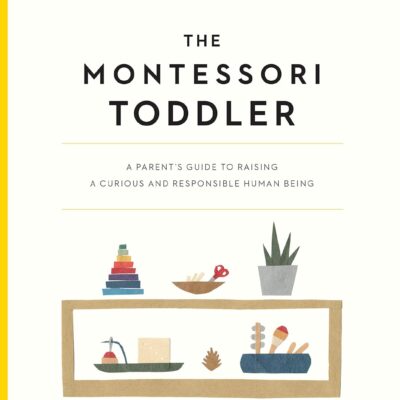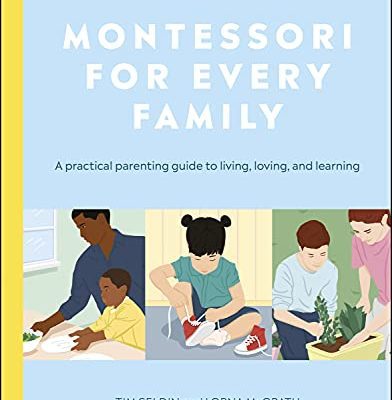Observation is a requisite part of the Montessori philosophy. Maria Montessori trained teachers; she emphasized that they observe to “follow the child,” recognize their needs and respond to them. This article is about cultivating observation as an essential skill in the classroom. We will examine the different facets of obser- vation to feel more comfortable observing as part of your routine.
Observation in My Childhood
My story of observation began when I was a child. You may be wondering how a child can know how to observe. I did not. I was following my inner teacher. Through her observation of children, Dr. Maria Montessori believed that each child has access to their own teacher. This teacher knows all the lessons he needs to learn to fulfill his needs and destiny. This teacher is his inner teacher. I was born and raised in a town on the mountainside where nature was part of my growth. My mom taught me to observe everything around me, the clouds, the trees, and the stream. She encouraged me to watch the bees trying to take the nectar from the flowers. She used to tell me: “If you listen and observe, you will hear the bee buzzing!” I learned how to talk to people, clean the house, and cook from watching her. These early experiences with observation helped me overcome many difficulties and be successful in my career later in life.
An Introduction to Observation
What is observation? Have you observed anything? What did you watch? How did you make comments? What did you feel when you were following? Have these observations changed you? What would you add to your statement next time?
The dictionary defines observation in the following manner: It is the action or process of carefully observing something or someone to gain information. Observations are different from one person to another and can be short-term or long-term.
Dr. Maria Montessori considered observation a continuous part of the adult’s work. Her brilliant discoveries were based on a lifetime of keen observation. That led to an understanding that the child grows the pattern for his development within himself.
It is the child’s inner teacher that must be allowed to direct the child’s development. Dr. Maria Montessori gathered data patiently, reflected on the information gathered to conclude, and took the proper steps.
Observation in my Early Career
Observation has been an essential part of my career in the Montessori field. My early experience with observation started when I was working as a floater in an American school in Kuwait. I moved from one classroom to another, trying to fill the absence of either the assistant or the teacher herself. I worked at this school for four great years. Although all the pre-school teachers implemented the same curriculum, each classroom delivered it uniquely. I had no problem following the routine of each classroom. I carefully watched the teachers doing different circle times. I listened to their conversations with children and each other and how they implemented their schedules throughout the day.
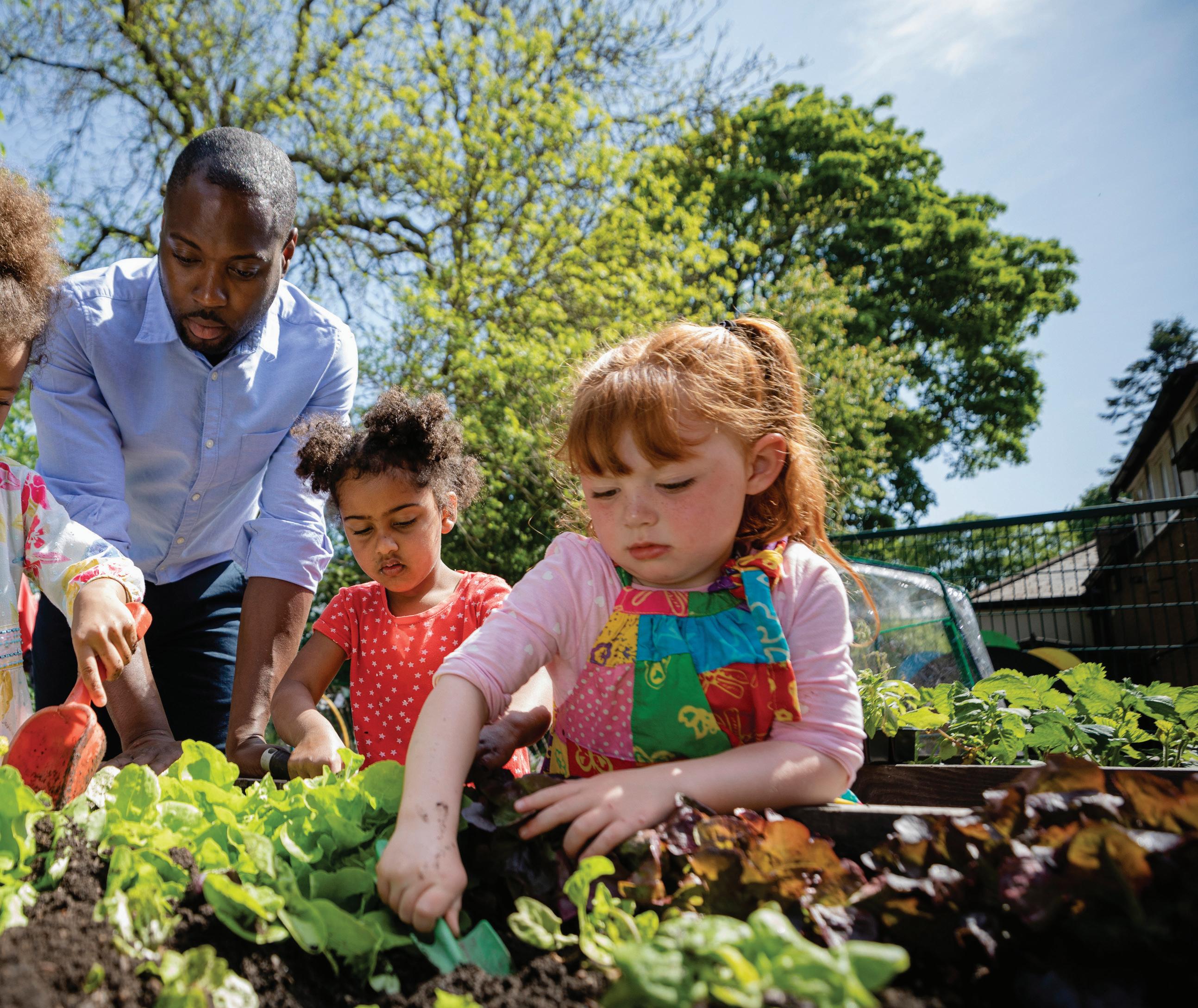
My observations were natural and spontaneous. There were things that I did not like in the classrooms and some things that I liked. I started to understand why some classes were organized, and some were not. With time, I understood why some children were listening and enjoying their time in school and why some were not. Additionally, I realized why I was full of energy and happy to help Mrs. A but overwhelmed with Miss B.
I observed, supported, and kept notes for myself at the start. Slowly, I started sharing ideas I learned from the teachers while moving from one classroom to another. Following what my heart told me to do, I sang with the children during circle time. I played games to enhance their listening skills and helped the children with behavior problems to calm down and focus on their work. I realized later that the teachers started to trust me and treated me like part of the team. Not only that, but they were also asking me about what ideas I had and what new things I could add to their classrooms.
At that stage, I observed not because I was required but because I felt I needed to find the best way to communicate with the teachers and understand how they led their classrooms.
When I did my Montessori diploma training in Kuwait, I learned that observation was an essential tool used by the teacher to follow the child, discover his interests and needs, and adjust the child’s environment accordingly.
I was assigned to observe a Montessori classroom for a week. I described the classrooms and how the children were working in my observation. I also watched how the teachers communicated with each other and the children. Other things, such as the schedule and transitioning, were also interesting.
Every time I observed, I noticed that I was learning something new. I started to pay attention to things the teachers may not see. For example, for the whole week, I noticed that one child was so focused on building the pink tower for the entire hour I had been there. The teacher tried to make him do something else, but the child kept returning to work with the pink tower. I knew then that the child was going through what Montessori called “sensitive periods,” and the teacher overlooked that.
I saw children very talented in the arts ignored by the staff, while others trying to do a map project gave up when they could not find the materials. I observed an inspiring teacher who led her circle time beautifully. I learned a few songs and got ideas on engaging children and making it fun for them. I could see clearly what was working and what needed to be changed! My brain was trying to find solutions while recording. I realized that there was much more to the art of observing than recording the skills or noticing a behavior.
After finishing my Montessori Diploma, I got accepted to work as a Montessori teacher in Canada. I was excited to start my career as a Montessori teacher and share my experience. I was one of the five teachers in the class of forty children, with one lead, three assistants, and myself, who had just joined the team. I was trying to adjust to the new environment. I felt overwhelmed and lost. There were too many rules, different ways of presenting, and diverse personalities. There were lots to learn. I had to get to know the children, the teachers, and the environment. It was so busy that it was hard for the teachers to answer my questions. That was when I realized that I needed to step back and observe.
The class lead agreed to allow me to observe the classroom before I started doing my responsibilities. That helped me understand the rules, transitioning, schedules, and most importantly, get to know the teachers and the children better.
Observing Children
Maria Montessori observed how children learn from each other. She also let the children guide her to what they needed and found interesting. This quote exemplifies the importance she placed on observation: “Even when helping and serving the children, she (the teacher) must not cease to observe them, because the birth of concentration in a child is as delicate a phenomenon as the bursting of a bud into bloom.” Maria Montessori, The Absorbent Mind
When I started observing children, I felt joyful. It was interesting to see how the children worked, moved, and communicated with each other. I tried to understand why John was hitting, and Mary liked to work only with knobbed cylinders! I wondered how the children felt when the teacher interrupted them and what I would have done differently. I suddenly started to think of solutions and new ideas instead of judging. I looked at children with eyes of love and compassion. I became humbler and more peaceful. As I was determined to understand the children’s interests, needs, and abilities, I adjusted the environment accordingly. I was so motivated to try new things with the children I started adding new materials on the shelves and observed again to see what was working and what needed to be changed. Slowly I noticed that the children began to trust, respect, and love me. I was so happy that the children wanted to work with me. Others were asking for help, and some enjoyed my circle time. My heart was a field of joy and happiness when the children greeted me with a big smile and a warm hug in the morning. The children remembered my name and shared stories with their parents about me as the new teacher. The more I observed, the more my relationship with the children grew, as I enjoyed my work and learned about their needs.
I realized that observing children was an art. You can not learn it in one day or a year. It is a lifelong effort. You need to connect with your heart, let go of your pride and anger, and become humbler. That created peace inside me and in our classroom.
Observing Teachers
The lead teacher allowed me to observe the classroom for two weeks in my new position mentioned in the above section. That helped me get to know the teachers, understand their personalities, and connect with them. It also helped me to recognize my natural leadership skills.
I observed how the teachers were moving in the classroom and communicating with each other. I also watched their body language, tone of voice, and interactions with the children. I was curious to know why some teachers were quiet and calm, and others were open and outgoing. I could see how the classroom dynamics and teacher relationships affected the children’s peace, harmony, and environment. The lead teacher was trying to support and guide the team. Besides teaching the children, she was the campus lead. She was kind, friendly, and respectful with the children and her team. She talked to them in a gentle voice and helped them solve their problems without getting angry.
Additionally, she presented the materials in a well-mannered way while doing classroom management. I saw how much she loved the children and how the children loved her. The children trusted her, respected the classroom rules, and worked independently with joy. However, I noticed that sometimes she was tired and overwhelmed. I realized she needed support and help, so I started offering my service and taking on some of her responsibilities. I did classroom management while she was working with the children. I also asked the lead if we could take turns to do the at- tendance and circle time.
I jumped to help a teacher who needed help with children testing her patience while working in Practical Life, and I shared some ideas about communicating with children to gain their trust. I supported the teachers during circle time and encouraged those struggling to do it.
The first six months I spent in the classroom was a turning point in my life. I learned how to build a good relationship with my colleagues and the campus’s lead. I started having small conversations with the teachers to understand their culture and what they liked and did not like. I also shared some of my stories and experiences with my peers to get to know me better.
I started to feel more comfortable sharing my ideas and knowledge with my team members. I did not hesitate to help a child or a teacher. I observed every day and tried to learn, change, and brainstorm with the team for new ideas. I noticed that the teachers came to me when the lead was busy or absent, asking for support or advice. I realized that I was leading the classroom and modeling the proper behavior I wanted to see and encourage in the teachers and the children. The teachers and the leader of the class welcomed me. They met my approach and ideas with cheers, enthusiasm, and support.
My observation as a natural leader, skill, and love for the children led me to accept the position of campus lead after six months of being a directress. The head directress and the team decided after the unfortunate and sudden leaving of the campus lead.
My start as a campus lead was full of excitement, challenges, and accomplishments. I was fortunate with my work team. We were all learning how to work together for the children’s sake. I started to observe more. I wrote my responsibilities every day and reflected on everything I handled, hoping that I could learn something from it or improve it in the future. I visited and observed the other classrooms daily. I offered my help when needed. I listened to the teachers, showed them love, respect, and empathy, and helped them solve problems.
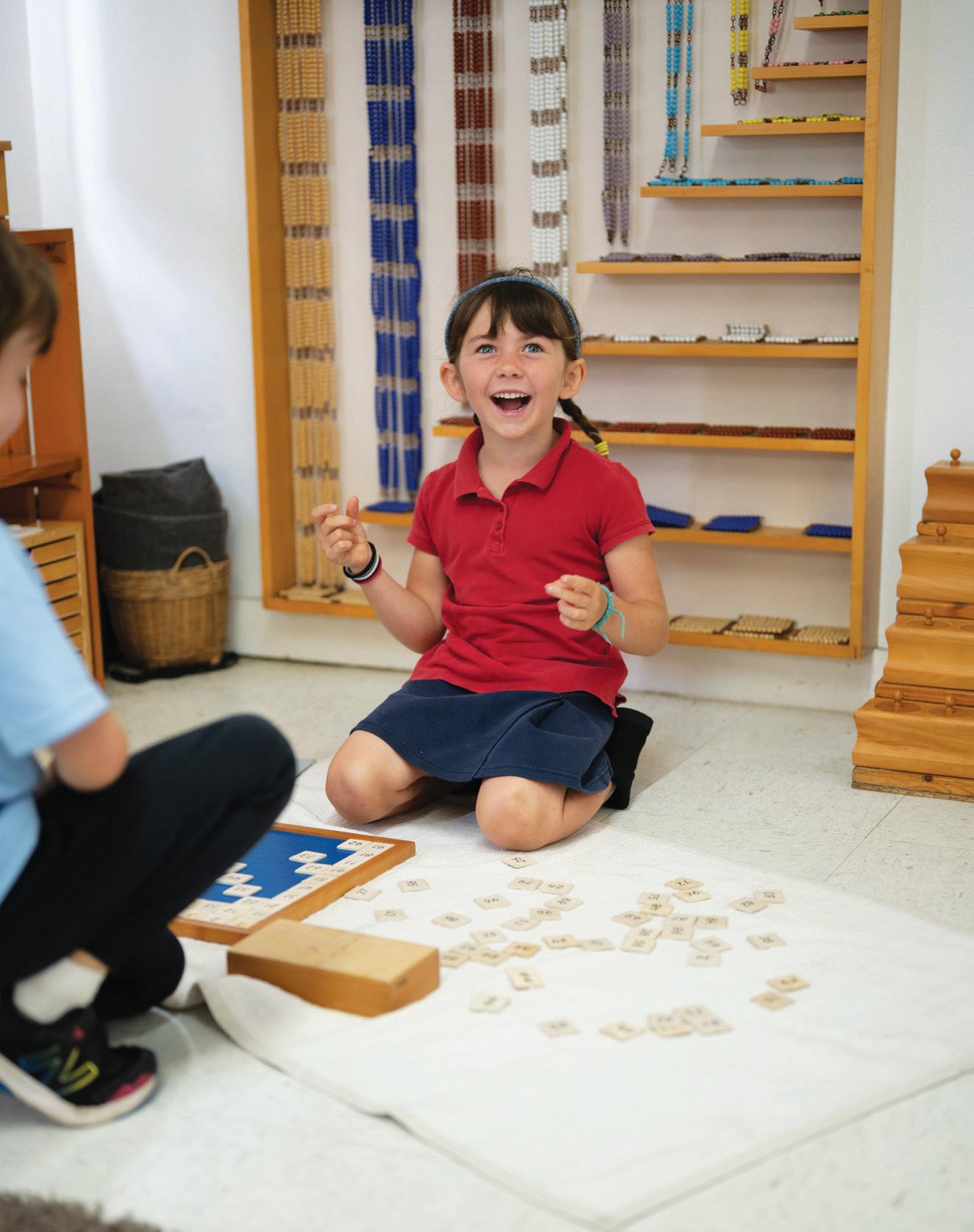
The desire to observe was growing more in me. It became a part of my daily life. It was the key to gaining teachers’ and parents’ trust and having a peaceful and happy campus when I was there.
Through observation, I learned how to accept and understand people the way they were and focus on the positive side. I also learned to find the best way to communicate with everyone. I noticed the power of observation on me. I became more humble, patient, and peaceful.
I discovered that the teachers were learning and growing from observing me and observing each other. We all had to model the proper behavior in front of each other and the children. Our conversations became more meaningful and peaceful; the children were happy and respectful, and there was more harmony and joy in the environment.
Observation and Training Teachers
During my stay in the United States, I had the opportunity to volunteer in a Montessori school. It was a new school with new staff.
My job was to support and train the teachers in transitioning where children are still learning potty training—fourteen children of mixed ages, between two and a half to three and half years old. The children were not fully toilet trained and were in school for the first time. The Montessori teacher had a diploma but no teaching experience. The assistant was a parent of a Montessori child. Her knowledge of the Montessori philosophy was little; this was her first time with the children.
I did not have much information about this class except that the teachers struggled with classroom management. The head directress asked me if I could teach the teachers some techniques on classroom management and how to talk to children.
My observation started as soon as I stepped inside the classroom. The teachers were excited to see me, and so were the children. The lead teacher greeted me from afar using her loud voice. The children were eating breakfast. I immediately walked toward her with a smile and introduced myself in a gentle voice. Then I asked if she could introduce me to the children before they started working because I did not want to interrupt the work cycle. I also asked her to act as if I was not in the classroom and whether she allowed me to work and talk to the children. I encouraged both teachers to observe me while working with the children and write any questions to discuss with me at nap time.
I always found myself acting as if the classroom was my classroom whenever I visited a new environment, and that is how I felt in this classroom. I reminded myself that I must be kind, peaceful, calm, and humble. I did not want to ask questions because I did not want to overwhelm the teachers and disturb the classroom routine.
For the first half-hour, I looked at the classroom organization and how the children moved and worked with the materials. At the same time, I watched the teachers talk to each other and the children. I fixed the shelves, tucked a chair, and had small conversations with the children while observing.
After that, I started working with the children without making any immediate changes and corrections or teaching the teachers by telling them what was not working and why. I observed a lot and modeled the proper behavior I wanted to see in the teachers and children. In addition, I was writing some notes so I could share them with the teachers and the head directress at the end of the day.
For example, I walked to the child’s eye level and reminded him to use the toilet instead of yelling across the room and repeating his name many times to go to the bathroom. I took a child’s hand and showed him to walk into the classroom instead of yelling, “stop running!”. I hugged a new child, tried to comfort him, and then asked if he would work with me or read a book with me and did not ignore him. I had to breathe a lot and think fast. I kept reminding myself that I was there for the children’s sake, and we were all trying to find the best for them. We attempted to turn every struggle into a learning moment with the teachers.
The teachers had many things to do when the children were having lunch. I could feel they were tired, overwhelmed, and hungry. They tried to remind the children to sit, eat and finish quickly so they could clean up and put them to bed. I grabbed my snack, sat beside a child who was still learning table manners, and said: “Can I sit beside you so I can eat my snack?” The child said, “Yes!”. The child welcomed me with a big smile and a few giggles from the other children. I invited the teachers to sit and eat with the children. Then I asked the children if they needed help raising their silent hands, showing them what a quiet hand was. The child beside me watched how I was chewing my food, wiping my mouth, and asking for help from the teachers by raising my hand. I then cleaned up the crumbs and tucked in my chair.
The teachers and I sat together to reflect on our observations. The first thing I heard from the lead was, “Thank you! You helped us a lot, and the children loved you.” I asked, “How do you know the children loved me?” She answered, “They listened to you and wanted to work with you.” I asked, “Why do you think they were listening to me?” She said, “It was the tone of your voice and the way you were talking to them. You were so calm.” I said, “That is a good observation! Using a gentle voice, going to the child’s eye level, and modeling the right behaviors are the keys to gaining the child’s trust. We should respect children and try to understand their needs and the reason behind their behavior.”
The conversation between the teachers and myself was productive. I was asking questions about specific situations that happened in the class. For example, a boy was running in the classroom, who refused to listen to the teachers and gave them a hard time during naptime. I asked the teachers, “Why would you think Joshua stopped running in the classroom?” The lead teacher said she thought it was because I showed him how to walk in the classroom and asked him to help his friends by showing them how to walk instead of running. The assistant teacher said, “You put tape on the floor with the help of Joshua and gave him a presentation on how to walk on a line, and you kept on saying “walking feet.” Then I asked them why they thought Joshua went to his bed without any struggle. The lead teacher replied that I had experience with children, and he listened to me. I said, “He trusted me! He knew that I was trying to help him. I gave him two choices, and he was happy to choose between them. Joshua was happy to prepare his bed. He also helped other children to set their beds and turned the lights off.” The assistant teacher asked how I knew that Joshua would stop running and sleep without any trouble. I said that I did not know for sure. I was observing him and trying to understand the reason behind his running. What was he trying to tell me? How could I help him?
Most importantly, I did not give up and treated Joshua with love and respect. I was willing to try new things to help him. I was learning like the teachers were. We all agreed that we must change a few things in the classroom and try different methods to communicate better with the children and each other to have a peaceful environment. The teachers realized that observation is a crucial aspect of their daily lives to understand children’s needs and respond to them. They also needed the vision and hope that the child was not there yet.
The next day I visited the class. I noticed that the teachers had already made some changes in the environment. They moved the Practical Life area to make it more accessible for the children and added more materials on the shelves. They also gave children more time to practice table manners and care for themselves and allowed more independence to get ready to go outside. I could see that the lead teacher and her assistant were practicing their soft voices and modeling the proper behavior. I also enjoyed seeing the teachers brainstorming ideas and discussing ways to help those children struggling to follow the rules.
This experience with the teachers taught me that if you want to succeed in your work, you must have the ability to observe, record, find solutions, and reflect on them. Observation is something that you can learn and practice. You observe with your heart, and judgment and anger will melt away. When you do that, you become peaceful, happy, and humble.
Lobana Alabbas is a certified Montessori early childhood teacher from the London Montessori Centre and a certified Arabic language teacher and has been passionate about teaching children to love learning for over twenty-two years. She draws her inspiration from Maria Montessori and her teaching methods, who believe that “…it is the child who makes the man, and no man exists who was not made by the child he once was.”. She also believes that each child has a unique and wonderful spirit to help grow into an independent, responsible, and compassionate adult. She is also passionate about writing articles from her own experiences. She has published a few pieces in Tomorrow’s Child and New Horizons in Adult Education and Human Resource Development magazines.

